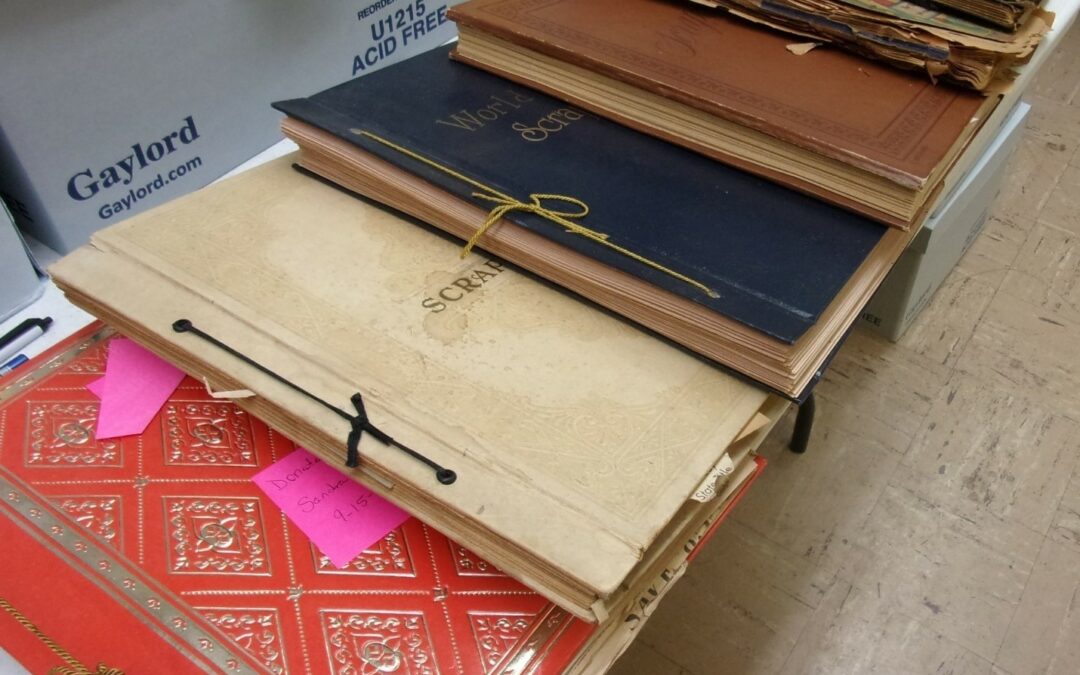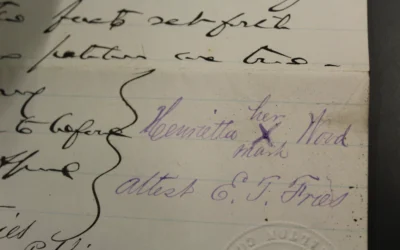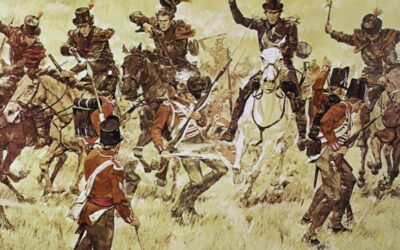When confronted with family research issues that seem to be difficult to solve, genealogists should apply the research approach. In an earlier issue of Bluegrass Roots, member J. Harvey Uttrell, walked us through the process for a family member who lived in Bullitt County, Kentucky.
Research Approach Steps
The research approach involves collecting and analyzing data based on a specific issue. The specific steps applied are:
- List known data
- Collect additional and relevant data
- Develop a set of hypotheses based upon this data
- Collect additional data pertaining to these hypotheses
- Evaluate the data to accept or reject each hypothesis
These are steps used in this case study.
Tombstone for Mary E Craig, Used with Permission [Find A Grave ]
Problem Involving My Kentucky Ancestor
Prior to her death my wife’s great grandmother, Mary Elizabeth (Welsh) Craig, had given the family information concerning her Kentucky life.[1]
She had not, however, given any specific information concerning the names of her parents or other relatives other than the surname Welsh. The problem involved determining the names of her parents and other relatives.
Applying the Research Approach to Grandmother Craig
Here’s how the steps applied to this issue.
Step 1: List Known Data
Here’s what we know according to information from Mary Elizabeth (Welsh) Craig.
Her family lived in Shepherdsville, Kentucky.
She was born there in 1811.
On 1 October 1829, she married Dr. Thomas Craig.
Her parents died when she was about two years old.
She was raised by a grandmother named Welsh.
Her grandmother was a landowner and had slaves.
Mary Elizabeth had two brothers.
Step 2: Collect Additional and Relevant Data
Several official documents were obtained by visiting the courthouses in Corydon, Indiana, and Shepherdsville, Kentucky, and to the Kentucky State Historical Society Library, and the Kentucky State Archives and Library.
Documents which proved helpful were:
- The marriage certificate found in the courthouse in Corydon, Indiana, which verified the marriage of Mary Elizabeth Welsh and Dr. Thomas Craig on 1 October 1829. [2]
- Probate documents (will and letters of administration) of individuals with the surname Welsh who died in the early 1800s in Bullitt County, Kentucky.
- Each probate document [3] obtained gave valuable data, which could lead to making hypotheses to be tested.
These documents also served as clues for additional data needed to make final conclusions.
The facts found in these documents, which were used in testing the hypotheses are given below. The merits of these facts in making the final judgment will not be related.
I number the documents for reference when discussing the judgments about the hypotheses.
James Welsh was deceased prior to May 3, 1814.
Samuel Welsh was the administrator of the estate of James Welsh.
Samuel Welsh and William Welsh were among the buyers of James Welsh’s property.
Cash paid from James Welsh’s estate on 14 May 1814 for two coffins. (Seemingly there were two deaths.)
A will of Samuel Welsh dated 18 February 1817, and a codicil dated 29 May 1817 named Mary Welsh, his wife, as executrix, named his children, including a son, William Welsh. A reference was made to his “late son, James Welsh, dec’d.” The will and codicil were probated 7 July 1817.
Upon the settlement of the estate of James Welsh, there were payments included in the accounting for the “Boarding Clothing Washing Lodging Schooling for Sam’I Welsh Jr., Polly Welsh, and William Welsh.”
A will for Mary Forker, dated 10 September 1822, named her son, William, and grandsons, Samuel Welsh, William Welsh, neither of whom was yet twenty-one, and a granddaughter, Polly Welsh, not yet married.
Step 3: Developing Hypotheses Based on Data from the Documents
There were four hypothesis:
Hypothesis A: Samuel Welsh and Mary Welsh were parents of James Welsh.
They were grandparents of Samuel Welsh, Jr., William Welsh, and Polly Welsh.
Hypothesis B: James Welsh was the father of these three children.
Hypothesis C: Mary Welsh, the widow of Samuel, had married a man named Forker.
Hypothesis D: Polly Welsh was the same as Mary Elizabeth Welsh.
Although there seemed to be sufficient evidence to accept hypotheses A and B; there did not seem to be sufficient evidence to accept hypotheses C and D.
It seemed necessary, therefore, to secure additional evidence, using sources frequently neglected by genealogists (i.e. law records, particularly for civil cases).
Step 4. Collecting More Data to Accept or Reject the Hypotheses
Civil cases involving the Welsh families in the years 1820-1830 were indexed in Bullitt County. The documents were in the State Archives in Frankfort. [4]
Additional facts obtained from the legal records were:
One document began with the statement, “Mary Forker alias Mary Welsh:” In the materials was a receipt signed “Mary Welsh.”
On 15 December 1828, Samuel and William Welch, “children of James Welch, deceased” chose William Welch as their guardian.
In an equity case involving a slave, it was stated that William Welsh, the son of Mary Welsh Forker, had been made guardian of her grandchildren, Samuel Welsh, William Welsh, and Mary Welsh. (Note the use of the name Mary rather than Polly as in previous statements.)
In 1832, the heirs of Mary Forker sued Richard Roe. Heirs in the suit included William Welsh, Samuel Welsh, William Welsh, Jr., Thomas Craig, and Polly Craig.
Step 5. Evaluating the Data to Accept or Reject the Hypotheses
Evaluate each hypothesis based on the evidence.
Hypothesis A: Samuel and Mary Welsh were parents of James Welsh and grandparents of Samuel Jr., William, and Polly Welsh.
Evaluation: Documents 1-7 and 10 seem to give sufficient evidence to accept this hypothesis.
Hypothesis B: James Welsh was the father of these three children.
Evaluation: Documents 6 and 9 give evidence that allows the acceptance of this hypothesis.
Hypothesis C: Mary Welsh, the widow of Samuel, had married a man named Forker.
Evaluation: Documents 8 and 10 allow the acceptance of this hypothesis.
Hypothesis D: Polly Welsh was the same as Mary Elizabeth Welsh.
Evaluation: It was a common practice in the early 1800s for Polly to be the nickname for Mary. The marriage certificate for Mary Elizabeth Welsh and Dr. Thomas Craig, and Documents 10 and 11 allow the acceptance of this hypothesis.
Conclusion
It was determined, therefore, that the father of Mary Elizabeth (Welsh) Craig was James Welsh; her grandparents, Samuel and Mary Welsh; and her brothers, William Jr., and Samuel Jr.. The name of her mother was not learned.
By a systematic research approach, the author could ascertain the need for specific kinds of evidence that would lead to the solution of his problem about determining the family names of Mary Elizabeth (Welsh) Craig.
It is a procedure that is recommended for other genealogists who have difficult genealogical problems to solve.
Reference Notes
Amanda Craig, “Recollections of My Father’s and Mother’s Families,” Unpublished manuscript 1923.
Harrison County, Indiana, Marriage Records Box for the year 1829.
Three Wills of Bullitt County, Kentucky, 1798-1822, Book 1, p. 48, p. 146. pp. 205-207, 147, 242, 244; Will Book A, pp. 254-255. pp.255-256.
Equity Case File, Bullitt County, 1831-33; Kentucky Department for Libraries and Archives, Box 30, Bundles 87,127, 219, 239.
Editor’s Notes
J. HARVEY UTTRELL submitted this article to the 1993 edition of Bluegrass Roots. We did some minor editing for clarity.





